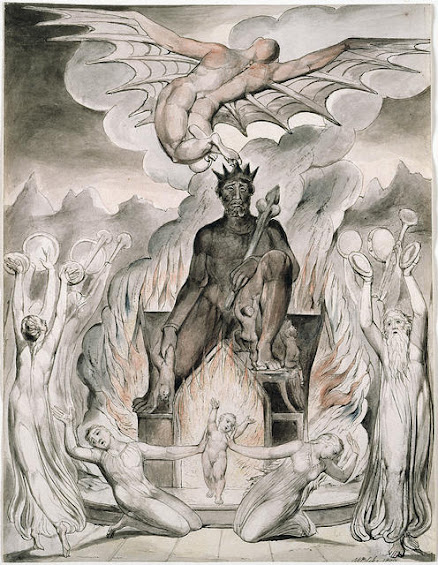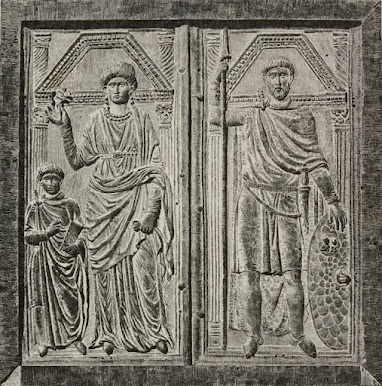Marsilio Ficino (1433–1499), the Florentine philosopher, physician, and magus of the Renaissance, occupies a peculiar and profound space in the history of thought. To engage with Ficino is to be drawn into the swirling orbits of a cosmos suffused with spirit, harmony, and divine light, a universe where Neoplatonic metaphysics and Christian theology intersect in dazzling spirals of intellectual and spiritual synthesis. Ficino’s project was not merely academic; it was existential, a labor of love aimed at guiding humanity toward a renewed apprehension of its divine origins and cosmic purpose. As the modern world finds itself once again at a crossroads, caught between the promises of technological progress and the disquieting void of postmodern skepticism, Ficino’s philosophy offers a luminous path forward—a way to embrace a new age without discarding the wisdom of the old.
Central to Ficino’s thought is his revival of Platonic philosophy, particularly as refracted through the lens of Plotinus and other late antique Neoplatonists. Ficino’s translation of Plato’s complete works into Latin — an achievement of staggering erudition — reintroduced the Renaissance intelligentsia to the Platonic vision of a cosmos animated by eternal principles of order, beauty, and goodness. Yet Ficino did not merely translate Plato; he transfigured him. Through the alchemical crucible of Ficino’s mind, the Platonic tradition became something new, a synthesis of classical philosophy, Christian theology, and the esoteric traditions of Hermeticism and astrology.
At the heart of Ficino’s philosophy lies the concept of the anima mundi, or world soul, a metaphysical principle that unites all things in a single, harmonious whole. For Ficino, the cosmos is not a lifeless mechanism but a living organism, animated by a divine intelligence that permeates every particle of existence. This vision, inherited from Plotinus and other Neoplatonists, was for Ficino not merely an abstract doctrine but a profound existential truth. To understand the cosmos as alive is to understand oneself as intimately connected to it, as a microcosm reflecting the macrocosm. Human beings, endowed with reason and imagination, occupy a unique position in this cosmic hierarchy; they are the intermediaries between the material and the divine, capable of ascending to the heights of spiritual enlightenment or descending into the shadows of ignorance.
Ficino’s emphasis on the human capacity for transcendence is most vividly expressed in his doctrine of divine love. Love, for Ficino, is not merely an emotion but a metaphysical force, a binding principle that draws all things toward their divine source. In his commentary on Plato’s Symposium, Ficino describes love as a kind of celestial magnetism, an irresistible pull that leads the soul upward through the concentric spheres of the cosmos toward union with the divine. This ascent, however, is not a solitary endeavor; it is communal, rooted in the recognition of the divine spark within every being. Ficino’s vision of love thus becomes a vision of universal harmony, a call to see the world not as a battlefield of competing interests but as a symphony of interrelated parts.
It is here, perhaps, that Ficino’s philosophy speaks most urgently to the challenges of the present age. In a world increasingly fragmented by political polarization, ecological devastation, and existential despair, Ficino’s vision of cosmic unity offers a counterpoint to the atomizing tendencies of modernity. To embrace Ficino’s philosophy is to rediscover the interconnectedness of all things, to see the self not as an isolated monad but as a participant in a vast and intricate web of relationships. This perspective, far from being a retreat into mysticism, can inform concrete action, inspiring a renewed commitment to social justice, environmental stewardship, and spiritual growth.
Ficino’s emphasis on the transformative power of beauty also has profound implications for the modern world. In his treatises on aesthetics, Ficino describes beauty as a reflection of the divine, a manifestation of the eternal forms that underlie the material world. To encounter beauty, whether in a work of art, a natural landscape, or a human face, is to glimpse the divine order that sustains the cosmos. This experience, Ficino argues, has the power to elevate the soul, to draw it out of the mire of material concerns and into the light of spiritual understanding. In an age increasingly dominated by utilitarian values and digital distractions, Ficino’s celebration of beauty as a path to transcendence offers a necessary corrective, a reminder of the profound spiritual dimensions of aesthetic experience.
Equally relevant is Ficino’s integration of astrology into his philosophical system. While modern science has largely relegated astrology to the realm of superstition, Ficino saw it as a means of understanding the cosmic rhythms that shape human life. For Ficino, the planets and stars were not inert objects but living entities, channels through which the divine will manifests in the material world. His astrological writings, though often dismissed as pseudoscience, reveal a deep awareness of the interdependence between the celestial and the terrestrial, an awareness that resonates with contemporary efforts to develop more holistic and relational models of science and philosophy.
Ficino’s philosophy also invites us to reconsider the role of spirituality in public life. Unlike the rigid dogmatism of institutional religion, Ficino’s spirituality is fluid, inclusive, and deeply personal. It draws from multiple traditions—Platonic, Christian, Hermetic — without subordinating one to the other, creating a framework that is both universal and particular. This approach, which might be described as a form of philosophical syncretism, offers a model for navigating the pluralistic landscape of the modern world. In an era of religious conflict and ideological extremism, Ficino’s emphasis on dialogue, synthesis, and mutual respect provides a blueprint for fostering greater understanding and cooperation.
To embrace a new age, then, is not to abandon the past but to reengage with it, to rediscover the wisdom that lies buried beneath the rubble of history. Ficino’s philosophy, with its profound insights into the nature of love, beauty, and the cosmos, offers a timeless guide for this endeavor. It calls us to look beyond the surface of things, to see the world not as a collection of isolated fragments but as a living whole, animated by the same divine intelligence that inspired Ficino himself.
In this sense, Ficino’s thought is both ancient and modern, rooted in the traditions of the Renaissance yet profoundly relevant to the challenges of the present. His vision of a cosmos suffused with spirit and meaning stands as a counterpoint to the disenchanted worldview of modernity, offering a path toward renewal and reintegration. To read Ficino is to hear the eternal music of the cosmos, a music that calls us to awaken, to love, and to create — a music that, in its inexhaustible richness, offers the promise of a new age.











